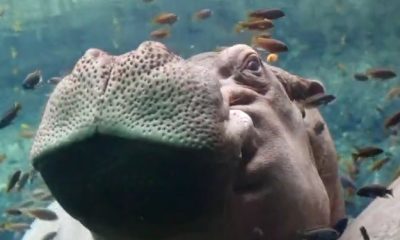
Wikipedia
Sharks, the ocean’s captivating and varied denizens, have long stirred the human fascination. Encompassing a spectrum of over 400 species, they span from the serene whale shark to the mysterious goblin shark. This collection delves into 30 of the most peculiar shark species, showcasing their distinct adaptations and traits that have enabled their survival in the oceanic realm. From the glowing lantern sharks illuminating the dark ocean depths to the ancient megalodon ruling the seas of yore, these species demonstrate the remarkable adaptability and diversity of sharks. Dive into the enigmatic world of these age-old predators, whose very existence defies our comprehension of marine life.
Saw Shark
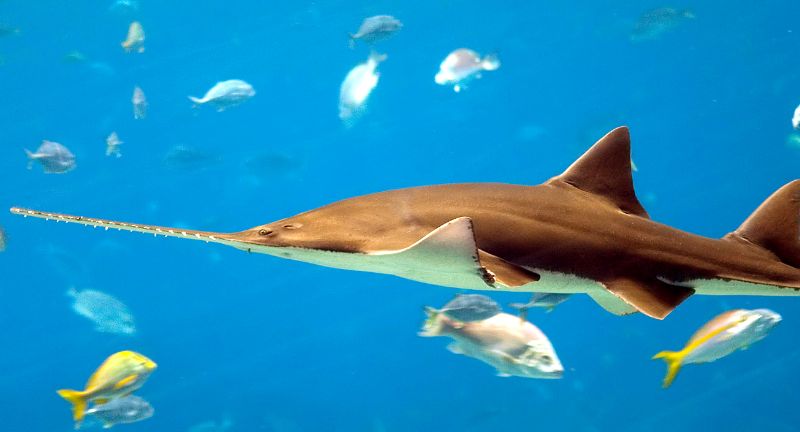
Wikipedia
The saw shark is noted for its long, serrated snout, bristling with teeth, used to swipe at prey. This snout also harbors sensory organs for detecting prey by sensing electric fields. Predominantly found in the waters off Japan, Australia, and South Africa, saw sharks inhabit the soft bottoms of continental shelves, fascinating marine biologists with their unique predation technique and distinctive look.
Hammerhead Shark
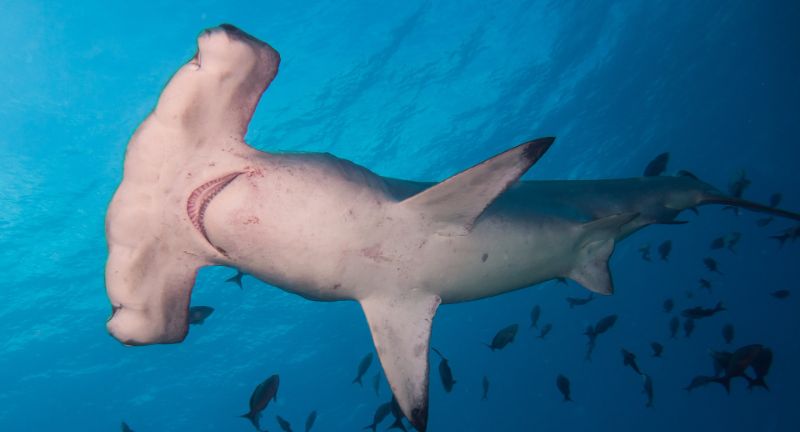
Wikipedia
Recognizable by their broad, hammer-shaped heads, hammerhead sharks’ unique morphology is thought to enhance their sensory capabilities. These sharks patrol the ocean floor in search of food, inhabiting warm waters globally. Their unusual head shape and schooling behavior remain subjects of keen interest in shark research.
Megalodon
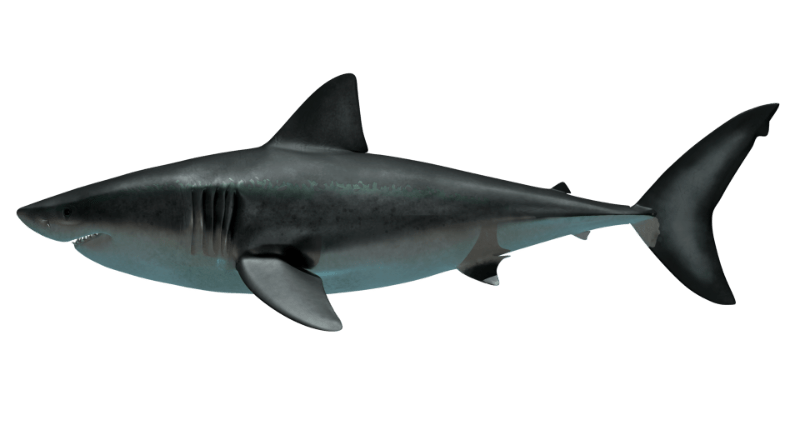
Wikipedia
Megalodon, an ancient shark, dominated as a marine predator, notable for its immense size and potent jaws. This extinct behemoth, one of the largest vertebrate predators to have ever lived, boasted formidable teeth designed for capturing large prey such as whales. Today, the mystery of megalodon captivates scientists and the public alike.
Basking Shark
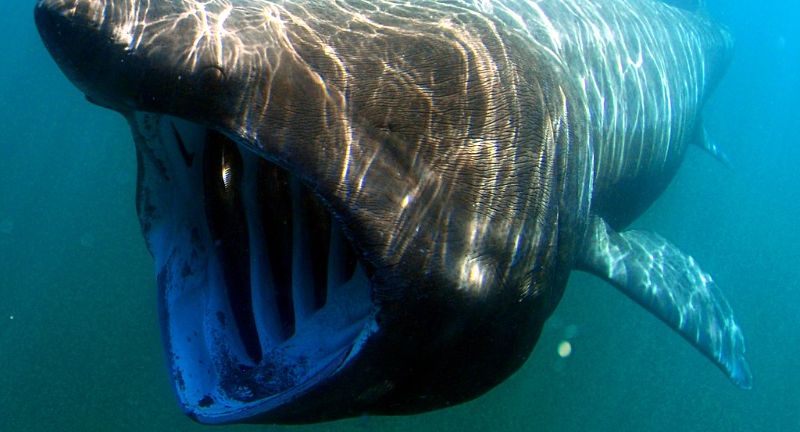
Wikipedia
The basking shark, second only in size to the whale shark, is a placid giant that feeds on plankton. It swims with its vast mouth agape, filtering its microscopic food from the water. Seen often in temperate seas, basking sharks are harmless to humans, drawing interest from wildlife enthusiasts and researchers.
Cookiecutter Shark

Wikipedia
The cookiecutter shark, despite its small stature, is known for its distinctive feeding pattern, leaving round bite marks on its victims. It attaches to larger beings with its suction-cup-like lips before excising a chunk of flesh. This shark inhabits the deep tropical seas and has been known to nibble on various marine life and even submarines.
Wobbegong
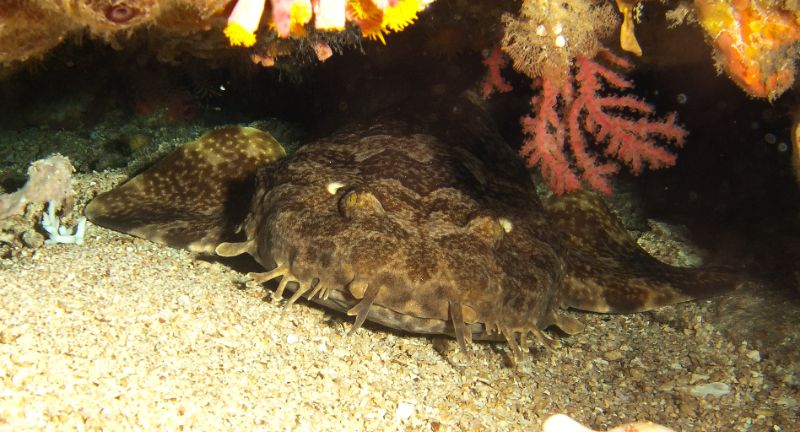
Wikipedia
Wobbegongs, or carpet sharks, are recognized by their elaborate, camouflage patterns, blending perfectly with the seafloor. These stealthy predators await their prey in Australian waters, striking unsuspectingly. Their distinctive look and behavior pique the interest of marine scientists.
Mega Mouth Shark

Wikipedia
The mega mouth shark, a rare find, utilizes its vast mouth for filter-feeding. Discovered in 1976, this deep-sea dweller remains one of the least understood sharks. Its unique feeding habits and appearance continue to intrigue the scientific community and shark aficionados worldwide.
Lantern Shark
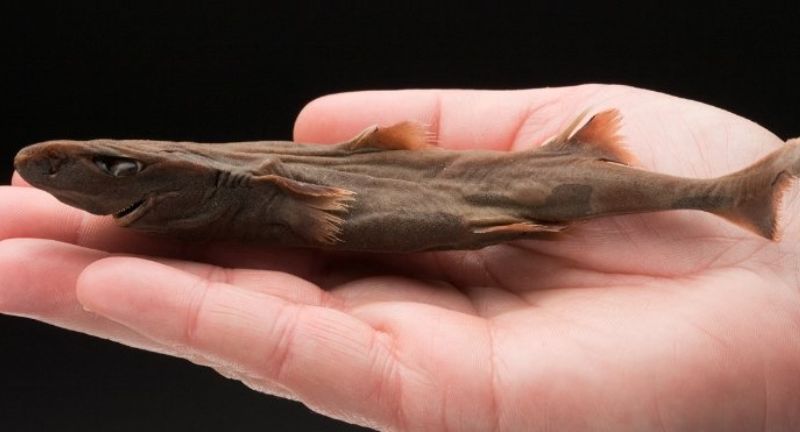
Wikipedia
Lantern sharks, small and capable of producing body light, use this bioluminescence for camouflage and communication in the ocean’s depths. Their ability to render themselves invisible to both predators and prey is a subject of ongoing research and fascination.
Horn Shark
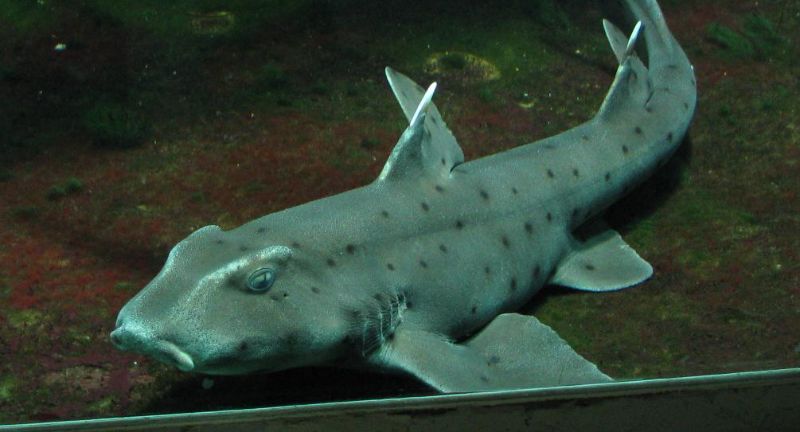
Wikipedia
The horn shark, a small, bottom-dwelling fish, is notable for its horn-like ridges above its eyes. Found in the eastern Pacific’s coastal waters, it preys on mollusks and crustaceans among the rocks and kelp forests. Its appearance and nocturnal activities have garnered attention from divers and marine researchers.
Thresher Shark
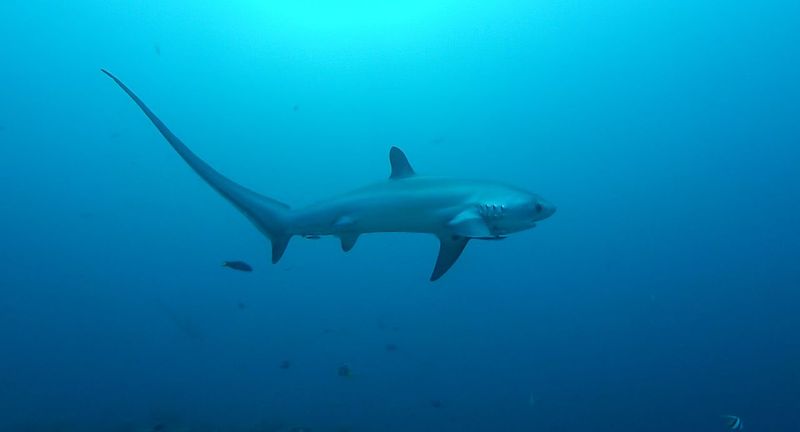
Wikipedia
Thresher sharks, recognized by their elongated, whip-like tail fins, use these tails to stun prey. Solitary by nature, they inhabit both coastal and open seas, preying on fish schools with their unique hunting method, captivating both scientists and the public.
Angel Shark
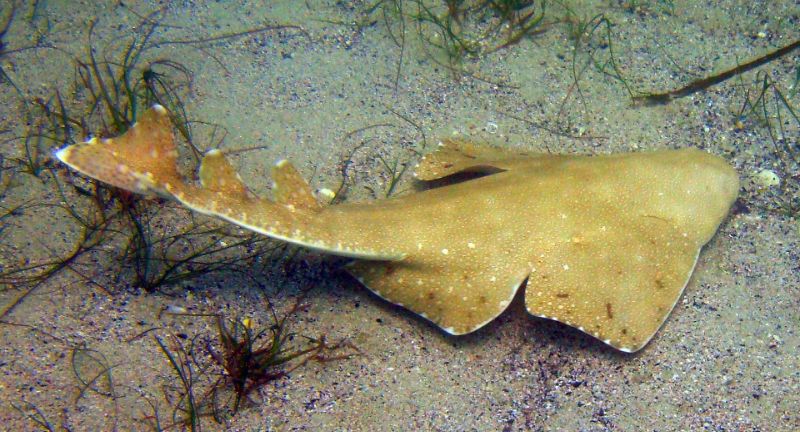
Wikipedia
Angel sharks possess a flat, ray-like body, enabling them to blend into the ocean floor as they await their prey. Found in various temperate and tropical waters, they employ a surprise attack strategy, fascinating observers with their ambush methods and unique physique.
Pocket Shark

Wikipedia
The pocket shark stands as one of the ocean’s most enigmatic and scarce species, distinguished by pocket-like glands near its pectoral fins. These elusive sharks, rarely observed, pose a significant mystery to the scientific community. The glands are speculated to emit a luminous liquid, aiding the shark in ways yet to be understood, possibly in luring prey or mates. The discovery of the pocket shark underscores the vast unknowns of oceanic depths and its inhabitants.
Sleeper Shark
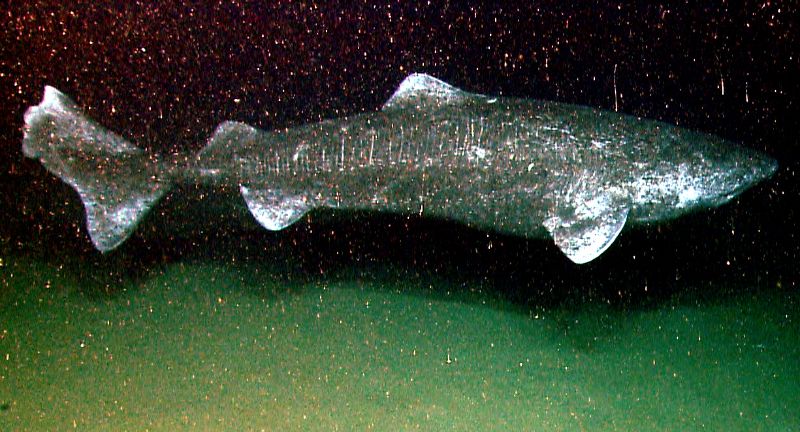
Wikipedia
Sleeper sharks, inhabitants of the deep sea, are noted for their languid movements and capacity to endure the frigid, high-pressure environments of the deep. With a sturdy, dark physique and diminutive eyes adapted for minimal light, they prey on an array of sea life, including fish, squid, and marine mammals like seals. The sleeper shark’s elusive nature and adaptation to deep-sea life mark it as a mysterious entity of the ocean.
Pygmy Shark
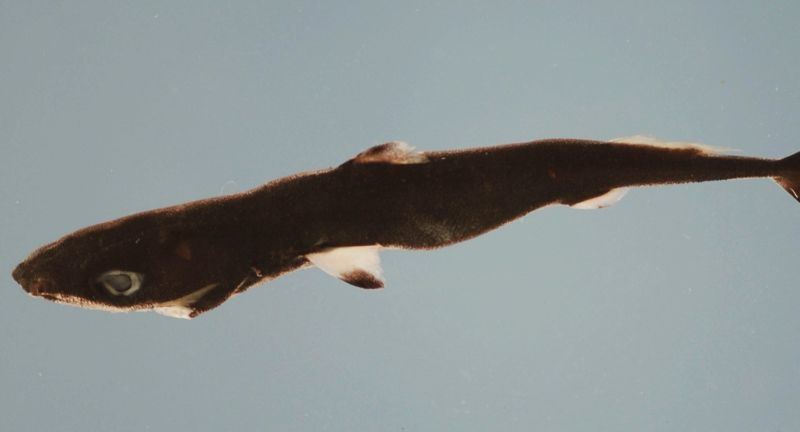
Wikipedia
The pygmy shark, small in stature, thrives in the deep sea, remarkable for its bioluminescent underside used to evade predators from below. Inhabiting global tropical and temperate waters, it preys on diminutive fish and crustaceans. Its capacity for light production and small size render it an intriguing subject for marine biological research.
Ninja Lanternshark
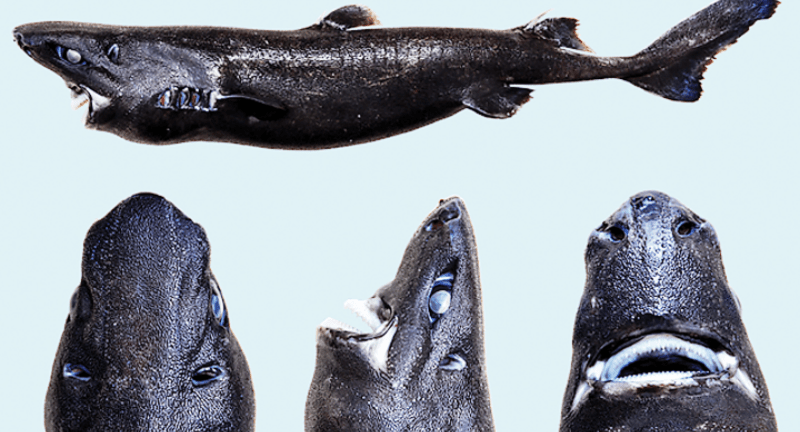
Wikipedia
Recently identified, the ninja lanternshark is small, dark, and emits a subtle blue glow. Named for its elusive nature, it dwells in the profound depths off Central America’s coast. Its bioluminescence likely serves as camouflage, merging with the ocean’s dark recesses. The ninja lanternshark’s discovery broadens our comprehension of deep-sea life’s diversity and adaptability.
Spotted Wobbegong
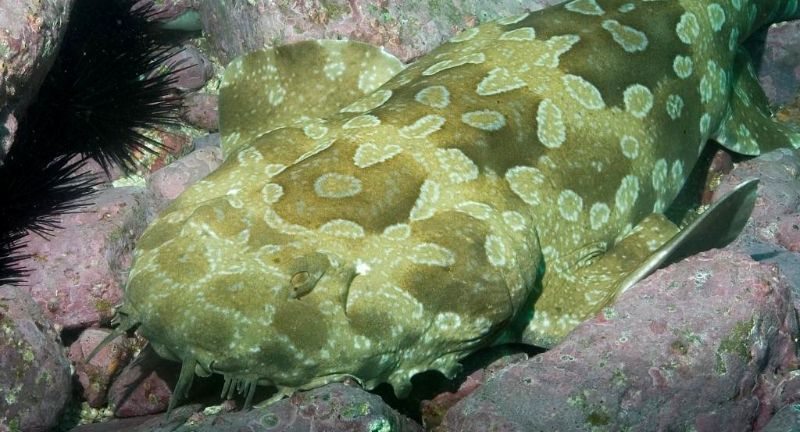
Wikipedia
The spotted wobbegong, with its intricate pattern of spots and blotches, excels in camouflage against the ocean floor. Its flattened body and fringed look enable it to seamlessly integrate into its surroundings, ambushing prey. Predominantly found along the Australian coast, it feeds on fish, cephalopods, and crustaceans, showcasing a unique presence among the vast shark populace.
Leopard Shark
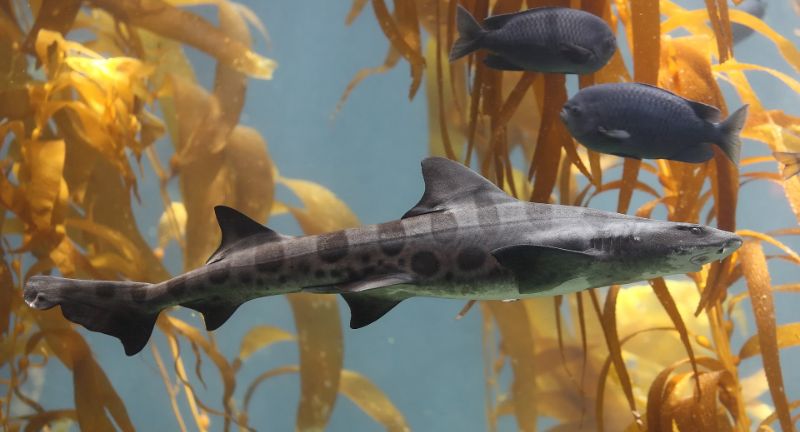
Wikipedia
The leopard shark, recognized by its leopard-like spots, resides in the eastern Pacific’s coastal waters. Known more for its grace than ferocity, it frequents bays and estuaries, feeding on crabs, shrimp, and small fish. Its elegant maneuvering and distinctive patterning make it a beloved figure among divers and marine enthusiasts.
Greenland Shark
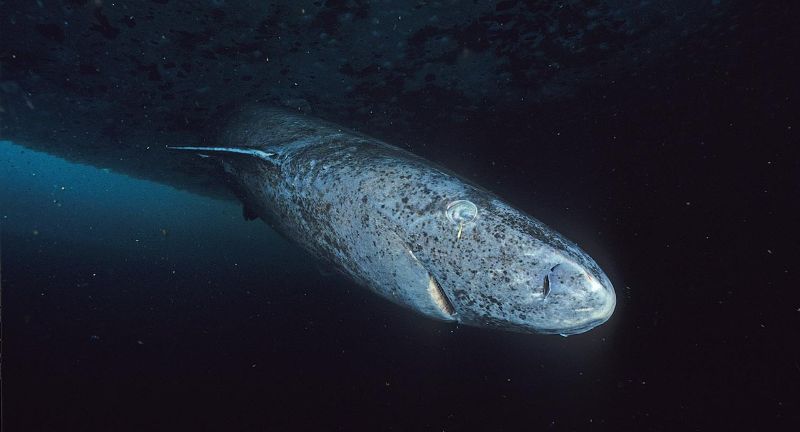
Wikipedia
The Greenland shark, a formidable predator of the Arctic, is remarkable for its slow movement and potential longevity of over 400 years. Inhabiting the frigid depths of the North Atlantic and Arctic Oceans, it feeds on a diverse diet. Its flesh, toxic when fresh, has woven into the fabric of Nordic culture and cuisine.
Goblin Shark
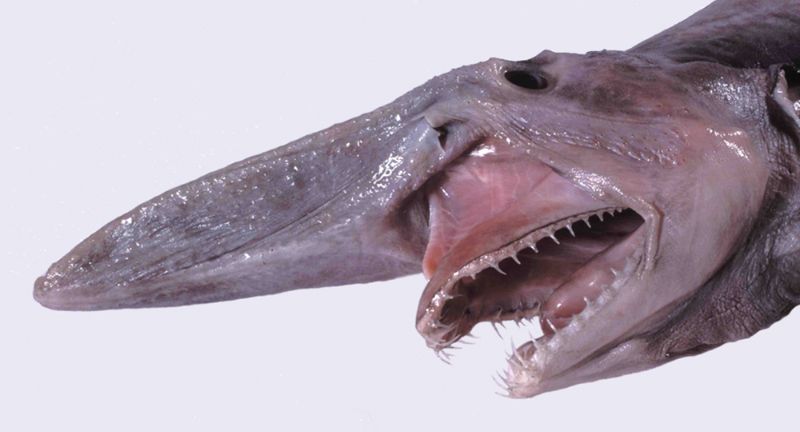
Wikipedia
The goblin shark, a seldom-seen deep-sea marvel, is recognized by its peculiar protruding snout and a jaw that can stretch forward to ensnare prey, captivating scientists. This pink-skinned shark dwells in the shadowy waters near Japan, surviving where few others dare to venture. Its unique appearance and hunting tactics have placed it at the center of marine scientific intrigue.
Frilled Shark
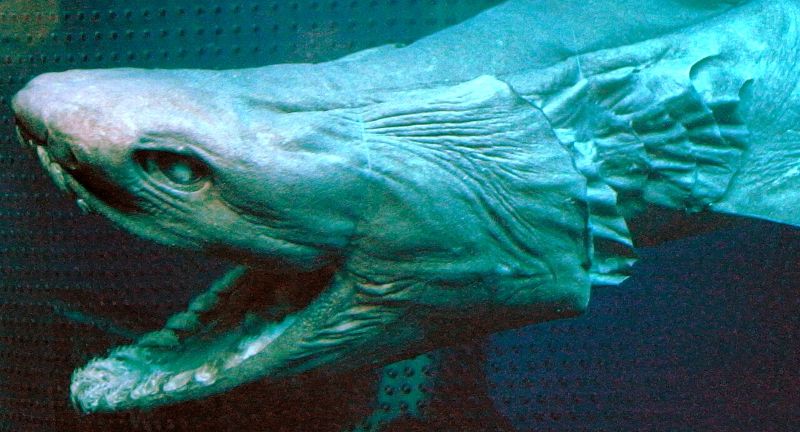
Wikipedia
Often likened to a relic of the ancient world, the frilled shark traces its origins back millions of years. It bears an eel-like form and is named after its frilled gills. Equipped with numerous backward-pointing, sharp teeth, it is adept at catching slippery deep-sea prey. Its rarity adds to its mysterious allure.
Zebra Shark
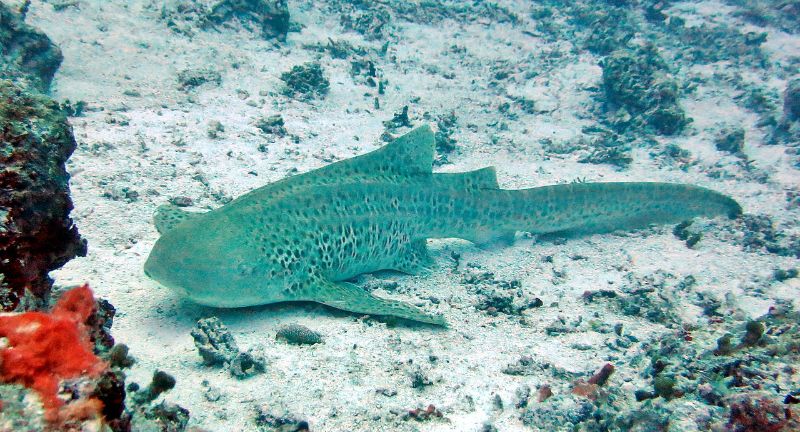
Wikipedia
Contrary to its name, the adult zebra shark sports spots over stripes, dwelling in the Indo-Pacific’s tropical waters. These docile giants rest on the seabed by day, navigating tight spaces in search of snails, small fish, and crustaceans. Their striking appearance and gentle demeanor make them a highlight for coral reef divers.
Whale Shark
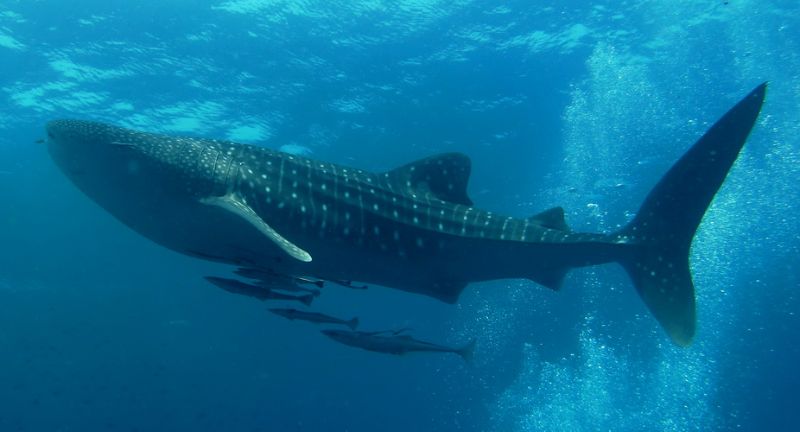
Wikipedia
The whale shark, the ocean’s largest fish, filters plankton and small fish with its vast mouth. Recognizable by its distinctive spots and immense size, it frequents warm global waters, offering snorkelers and divers the extraordinary chance to swim alongside these majestic beings.
Bluntnose Sixgill Shark
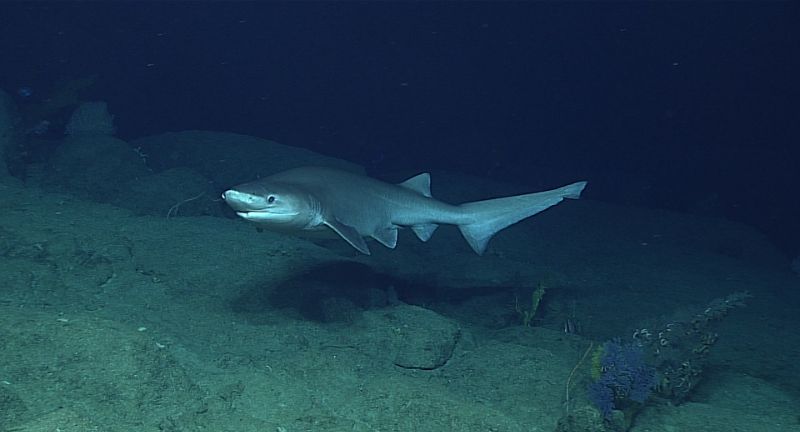
Wikipedia
The bluntnose sixgill shark, a relic of the deep, features six gill slits, unlike its five-gilled counterparts. Dwelling in deep waters near continental shelves, its size and ancient visage remind us of the ocean’s primordial past. Its existence in deep, shadowy realms piques scientific curiosity.
Velvet Belly Lantern Shark
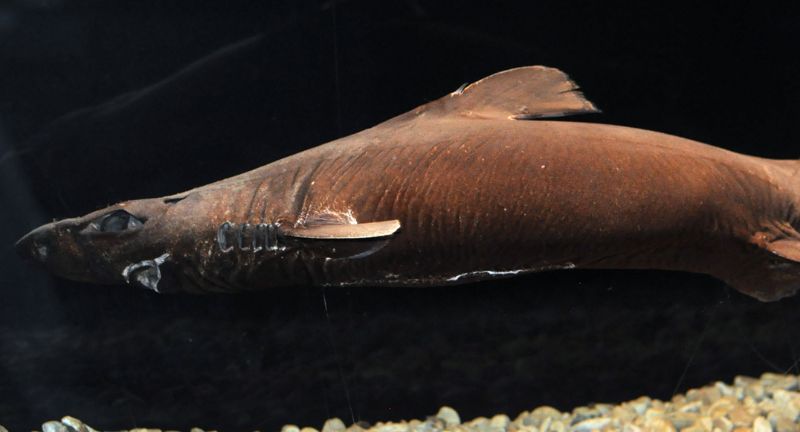
Wikipedia
The velvet belly lantern shark, identifiable by its luminescent spine, occupies the Atlantic’s depths. Its glowing underbelly, a defense mechanism, mimics the light from above, exemplifying the inventive survival tactics of deep-sea fauna.
Scalloped Hammerhead Shark
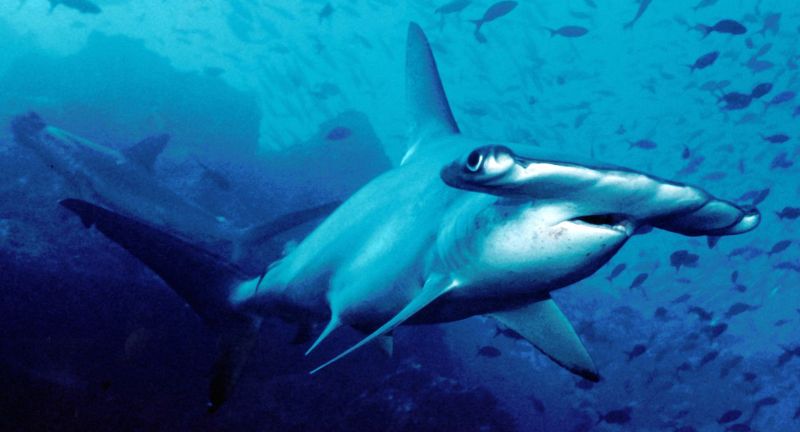
Wikipedia
The scalloped hammerhead shark, with its distinctively notched head, showcases enhanced sensory abilities. Forming large daytime schools, a rarity among sharks, they inhabit warm global waters, exhibiting unique social and evolutionary traits.
Bull Shark
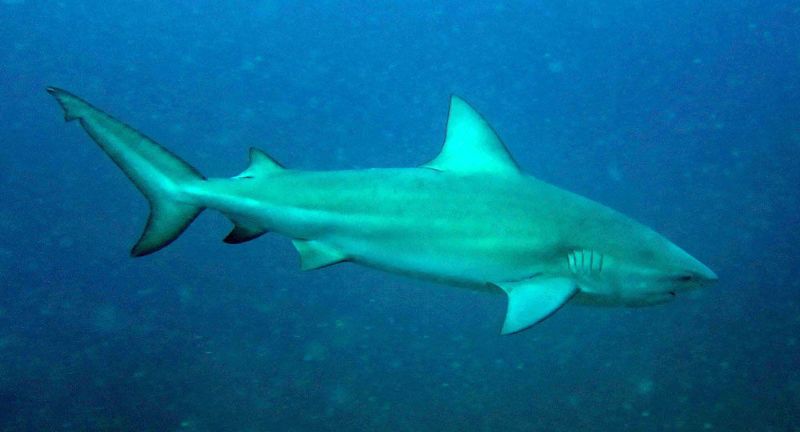
Wikipedia
The bull shark, adaptable to both salt and fresh water, is known for its robustness and versatility. Often found in shallow coastal zones, their presence in diverse habitats has led to notable human encounters, amplifying their formidable reputation.
Great White Shark
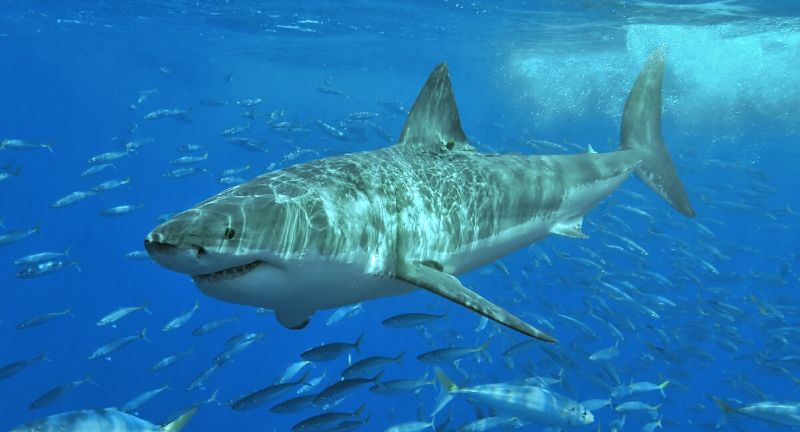
Wikipedia
The iconic great white shark, a symbol of marine might and cultural fascination, ranks as an apex predator. Its migratory nature and impressive size have cemented its status as a revered and feared ocean dweller.
Blue Shark
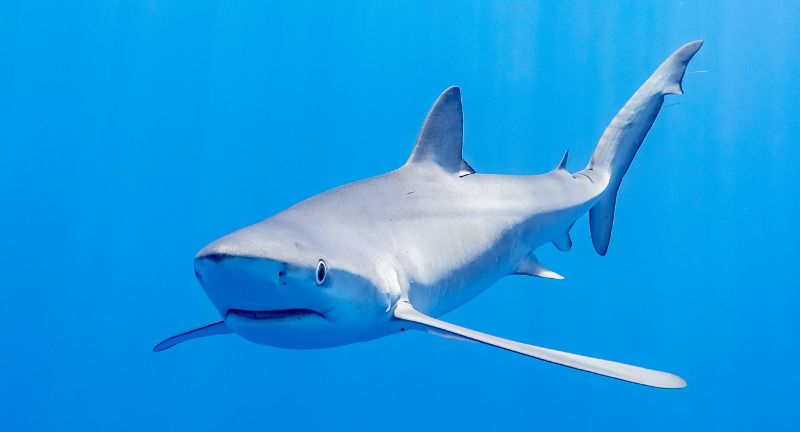
Wikipedia
The blue shark, celebrated for its slender frame and vibrant hue, roams the open seas. Its curiosity and graceful presence have endeared it to marine photographers and conservationists alike.
Tiger Shark
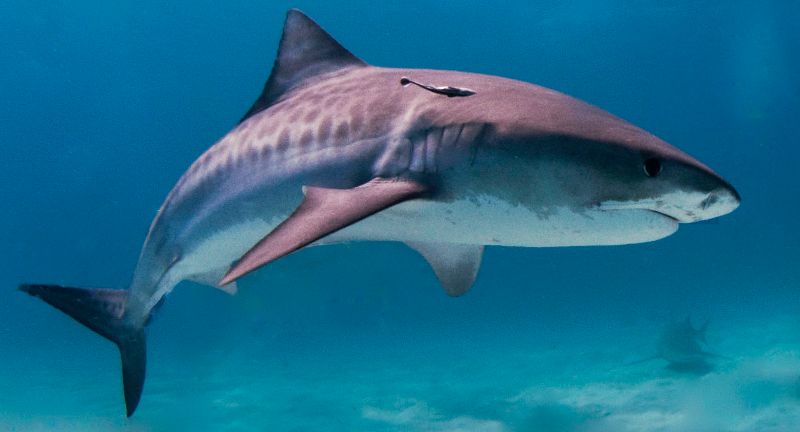
Wikipedia
The tiger shark, identifiable by its youthful stripes, consumes a diverse diet, earning the moniker “garbage eater” for its investigative nature. Its adaptability ensures its success in various marine environments.
Port Jackson Shark
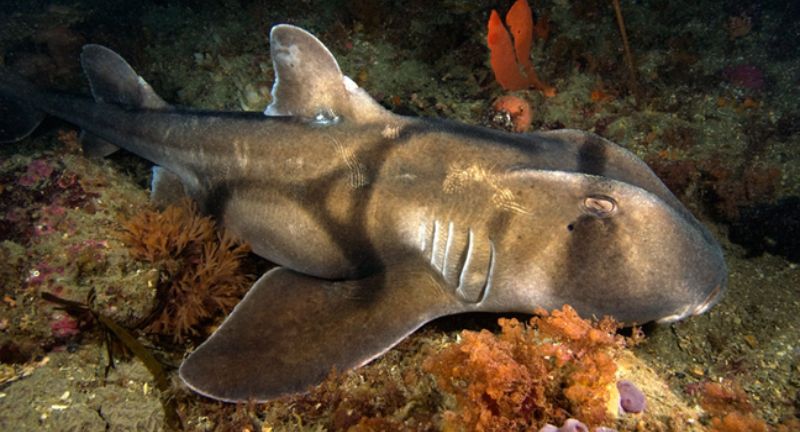
Wikipedia
The Port Jackson shark, notable for its distinctive markings and unique snout, showcases intriguing behaviors and reproductive strategies, captivating divers and researchers with its gentle nature and peculiar appearance.
Conclusion
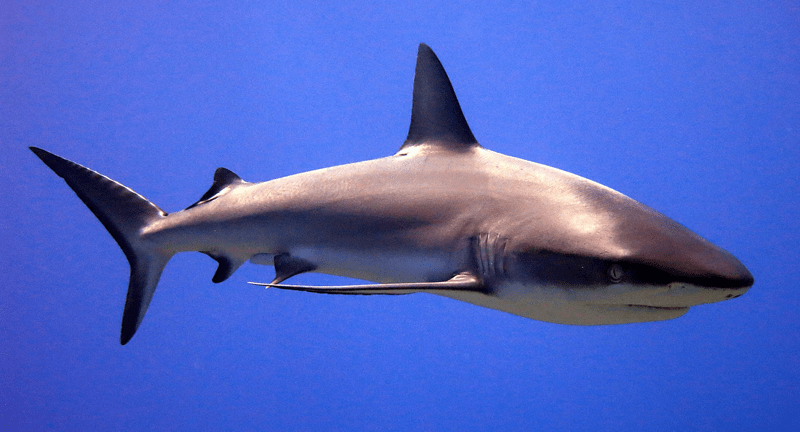
Shutterstock
In concluding our exploration of the ocean’s most unusual sharks, it’s evident these creatures are integral to their ecosystems, each playing a vital role in oceanic balance. From deep-sea dwellers to coastal species, sharks demonstrate an incredible array of adaptations, reflecting the ocean’s complexity. Their study not only quenches human curiosity but underscores the critical need for conservation, ensuring these remarkable beings and their habitats persist for future generations’ awe and understanding.








































